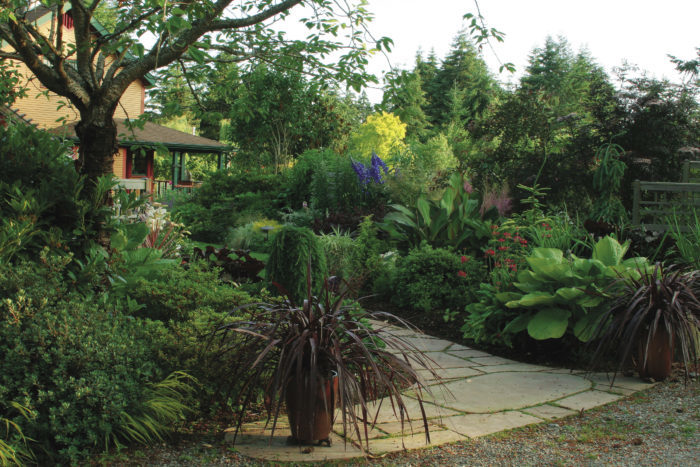
If you garden, you love plants—especially the newest and most unusual ones. After bringing these treasures home, they often end up plopped in various places without a lot of pre-planning or design in mind. And as the number of trips to the nursery increases, so does the number of planting plots, leaving many of us with a series of smaller beds around our property that have no real connection to one another. Although these gardens are filled with many treasures, they have no sense of continuity. This can happen in any garden, regardless of its size.
Small or large, gardens need unifying features to tie one area to the next and to create a sense of flow. Without that stability, things can get wild and out of control, making you feel uneasy and unsure of where to look or where to walk. Faced with this problem in my own yard, I came up with a three-part solution to help blend my entire landscape together.
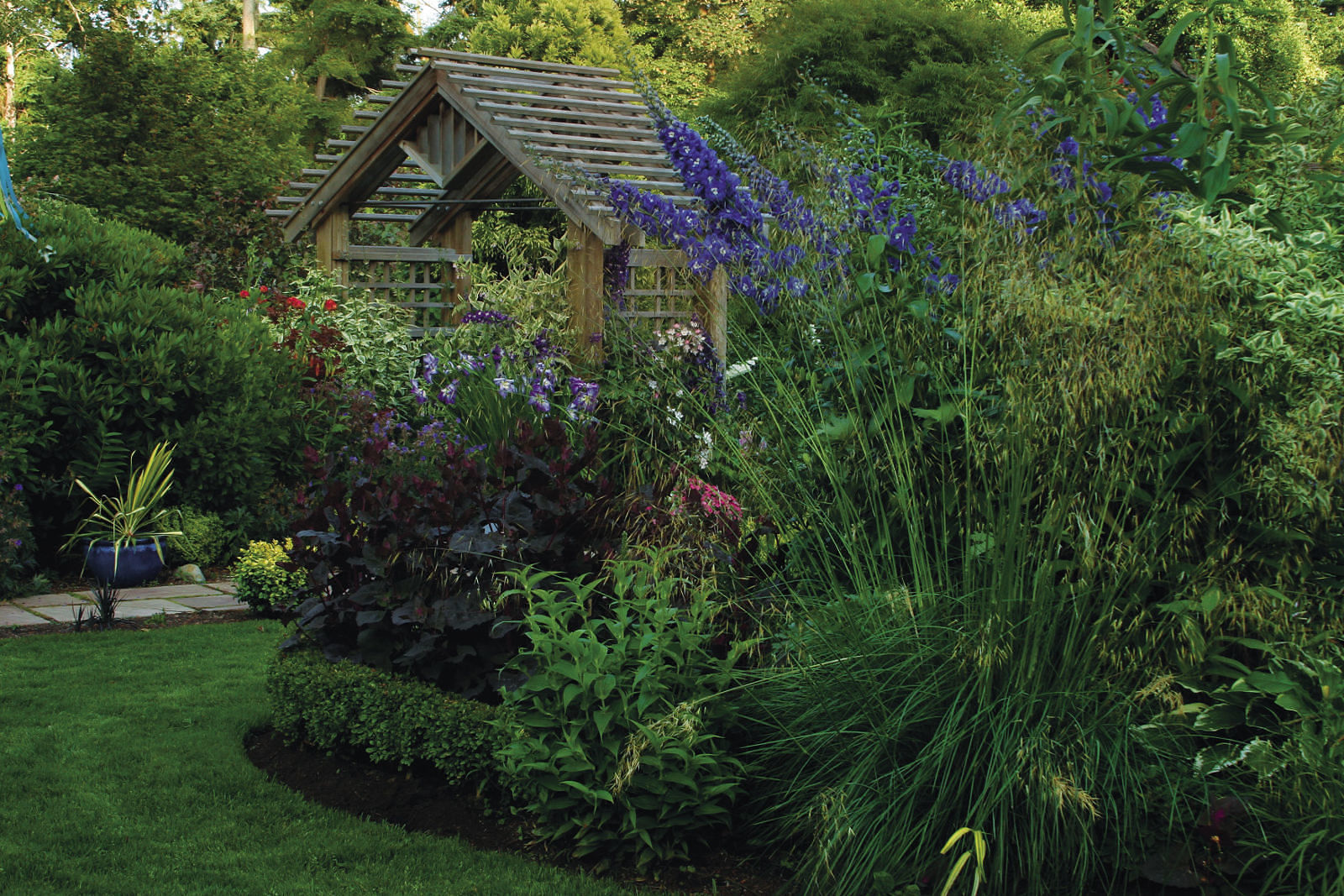

Establish a backbone plant
To help pull my landscape together, I chose one hardy, fairly basic shrub and used it as a backbone plant throughout the garden. Because the backbone plant is such an important part of the garden’s framework, careful thought should be given to its selection. Your backbone plant should be evergreen, because it needs to be seen in all seasons. And above all else, it needs to be low maintenance; it shouldn’t require frequent spraying or pruning, because your time should be spent on maintaining the rest of your garden. Shrubs, rather than perennials, work best as backbone plants, because they are large enough to have a noticeable presence in the garden but won’t dominate the scene as focal points.
In my Pacific Northwest yard, ‘Winter Gem’ dwarf boxwood (Buxus microphylla var. japonica ‘Winter Gem’, USDA Hardiness Zones 6–9) was the perfect backbone-plant choice, because it fit the essential criteria. The consistent use of this dwarf shrub establishes order in my garden beds, especially where there is an abundance of various perennials. The boxwood is like green hardscaping, drawing the eye forward as you move through the garden because it is a repetitive and recognizable element.
Integrate and repeat a color
No matter what the size of your garden, it is important to choose a color or color combination and repeat it to help unify the entire landscape. I often use combinations of burgundy and blue, which is a striking pair of contrasting colors. Some of my favorite perennials to use in this color scheme are Festival Grass™ burgundy cordyline (Cordyline ‘Jurred’, Zones 9–11), ‘Britt-Marie Crawford’ ligularia (Ligularia dentata ‘Britt-Marie Crawford’, Zones 4–8), and ‘Pacific Giants Mix’ delphinium (Delphinium ‘Pacific Giants Mix’, Zones 3–7). Whatever combination you choose, make sure it has bold contrast that catches and holds the eye. Good pairings include chartreuse and burgundy, yellow and blue, and burgundy and pink.
To further the sense of continuity, you should also incorporate large trees and shrubs that have your repeated color. This strategy works well in small gardens, and it is essential in large gardens because extra space gives the eye more room to get lost. To repeat my burgundy theme, I incorporated into my larger space purple smoke bush (Cotinus coggygria cv., Zones 5–9), Diabolo® ninebark (Physocarpus opulifolius ‘Monlo’, Zones 3–7), and ‘Royal Cloak’ Japanese barberry (Berberis thunbergii* ‘Royal Cloak’, Zones 5–8). Although our property is several acres, you still feel like you’re in the same garden anywhere you stand, thanks to these large splashes of familiar color.
It can be frustrating to go to the nursery with a well-thought-out and researched plant list and not be able to find what you are looking for. Instead of a specific plant list, draw up a set of criteria that fit the spot you are hoping to fill: for instance, a large plant (size) that is chartreuse (color) and round (shape). This will give you more options and more success in finding plants that will help you achieve your goal.
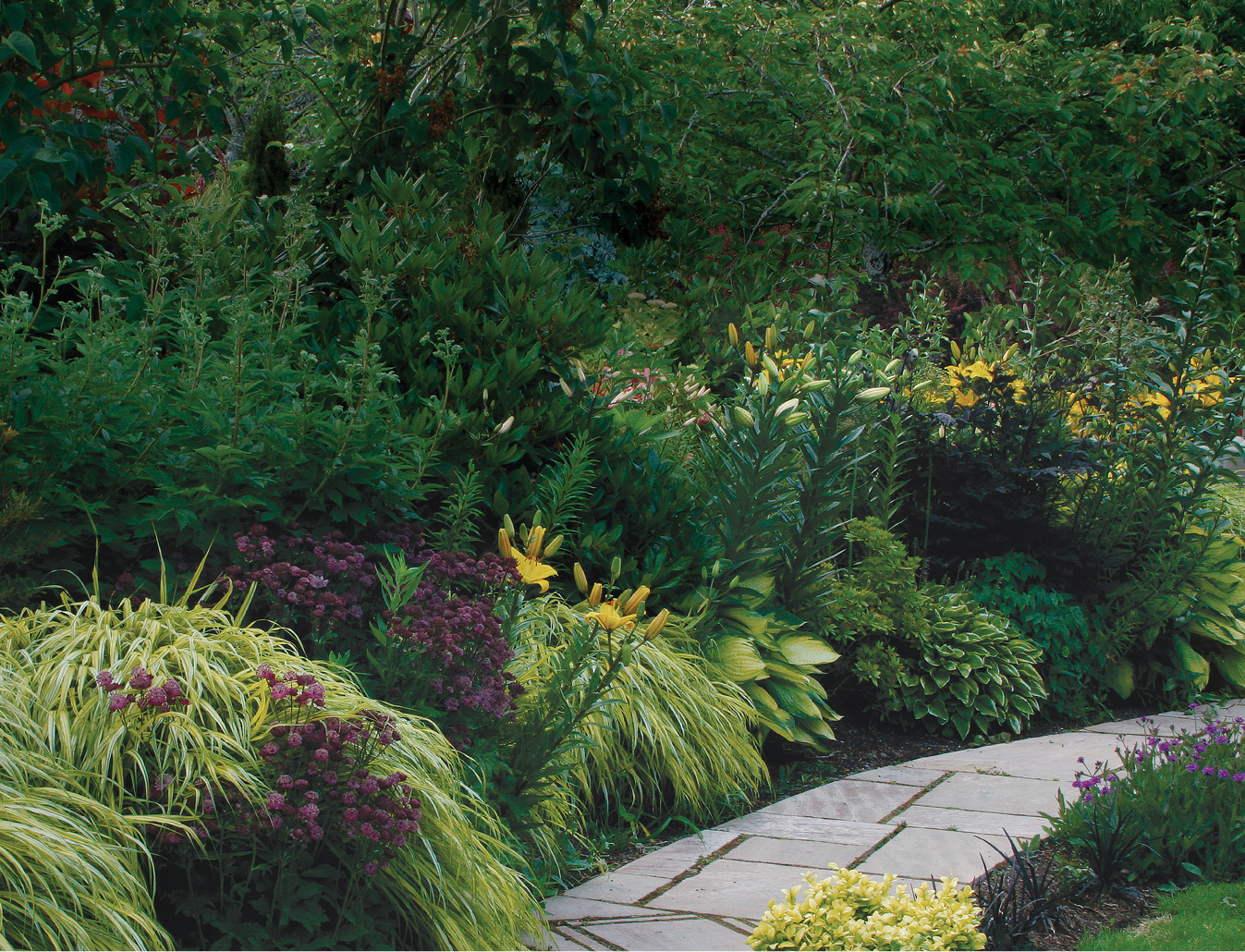
Soft and subdued doesn’t work. A repetitive color combination should be a pair of bold, contrasting hues, because they draw your attention and leave a lasting impression. The combination of chartreuse and burgundy (above)—as seen in the leaves of the golden Japanese forest grass (Hakonechloa macra ‘Aureola’, Zones 5–9) and the blooms of ‘Haspen Blood’ astrantia (Astrantia major ‘Haspen Blood’, Zones 4–8)—works well together, as does the combination of burgundy and blue.
Create flow with water
Water is an important element in any garden. It can drown out traffic noise, create a sense of serenity, attract birds, and create movement. But it can also be a wonderfully simple way to introduce commonality to a space. Water appears in many forms throughout my gardens. I have large features, like ponds and fountains, but I also have small-scale pots filled with water plants that I place in smaller beds. Water features in various places in the garden act as bold unifiers, not only for their visual presence but also for the sound they provide.
Many gardeners shy away from installing water features because they are afraid of the maintenance. But I have never installed a single water garden that couldn’t take care of itself. I use bundles of barley straw (available at garden centers and online) to help reduce algae in ponds because they work as an organic filtering system. I also use mosquito dunks that contain Bt (Bacillus thuringiensis) to control mosquitoes in standing water features. The installation and minimal maintenance of these features is well worth it when you see and hear how water brings your space together.
Gardening is a personal and creative form of expression. Your garden should reflect your taste and should not be bound by someone else’s rules. It is important, nevertheless, to consider and consistently apply guidelines that help create an outdoor space that flows and feels unified. After all, the goal is to create a garden that is more than just a collection of plants; it’s a continuous and complementary space that everyone—including you—can enjoy.
Design tip: Create curves
A good garden layout is essential for giving your space continuity and for developing a sense of flow. Instead of simply lining up plants like soldiers against a wall, use curved bed lines to encourage the eye forward to the next space and to keep the garden from being revealed all at once. This will help move you and others through the garden to see what lies ahead. Straight bed lines are static and encourage the eye to stop.
Two ways to put objects to work
In every garden, architectural features need to relate consistently to each other, either by style or color. If they don’t, they not only stick out like sore thumbs but also separate a space instead of uniting it.
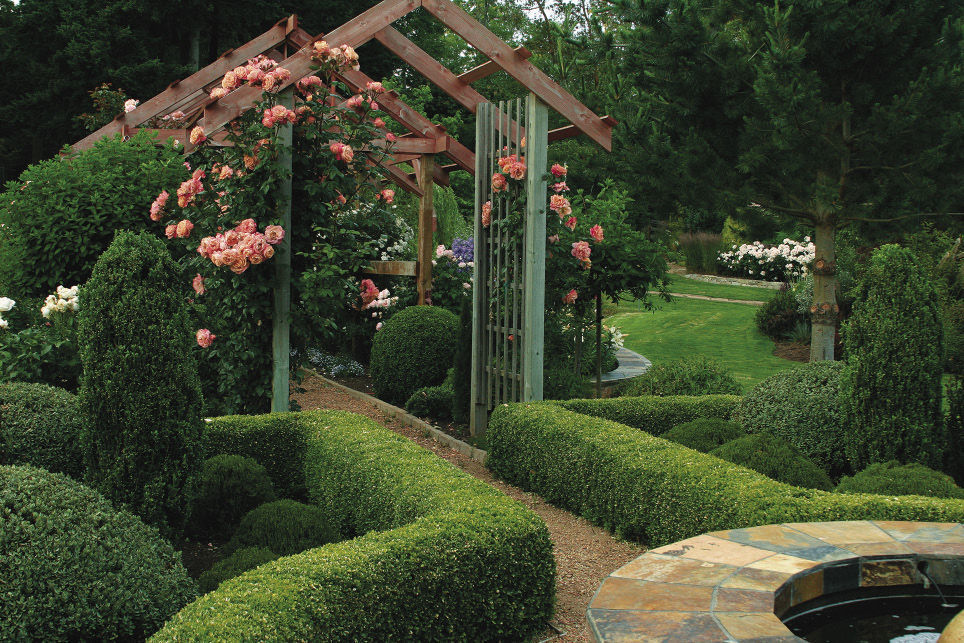
Stick to one style
I chose the triangle peak of my house as the inspiration for my gates and pergolas. The archways to the garden areas (above) were also constructed with the same triangular design elements.

Incorporate your color palette
I use a row of simple fence posts—painted blue and topped with light yellow caps and glass finials (above)—in several beds to help tie the garden together. This is an inexpensive way to infuse the garden with colorful, matching architectural features.
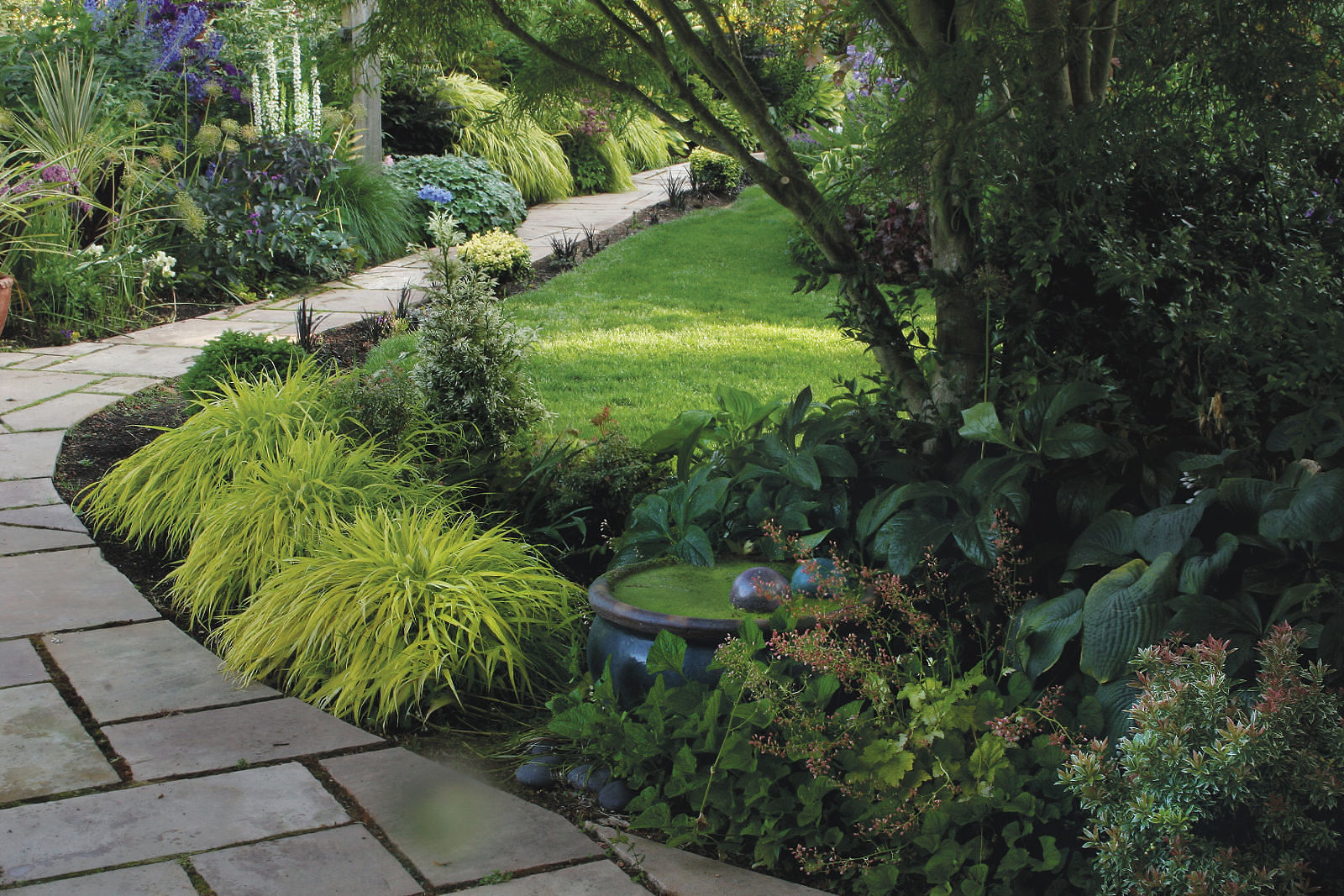
Don’t be intimidated by water features. It’s easy to incorporate water into the garden on a large or a small scale. Anyone can add a simple pond-in-a-pot (above). But even a small waterfall (below) can be low maintenance.
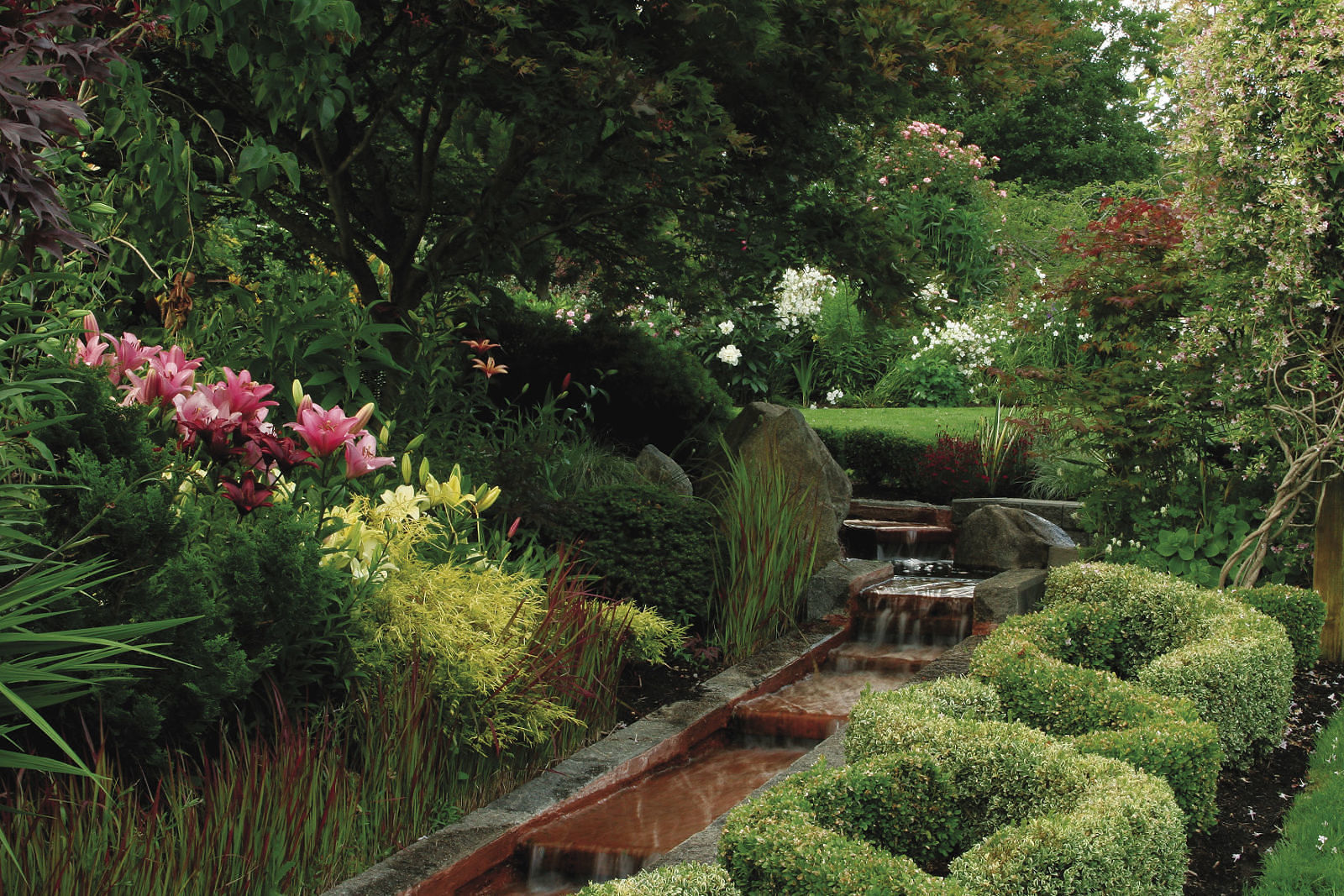
—Cindy Stockett is a member of the Northwest Perennial Alliance and the Northwest Horticultural Society. She gardens in Vashon, Washington.
Photos: Danielle Sherry
Fine Gardening Recommended Products

A.M. Leonard Deluxe Soil Knife & Leather Sheath Combo
Fine Gardening receives a commission for items purchased through links on this site, including Amazon Associates and other affiliate advertising programs.

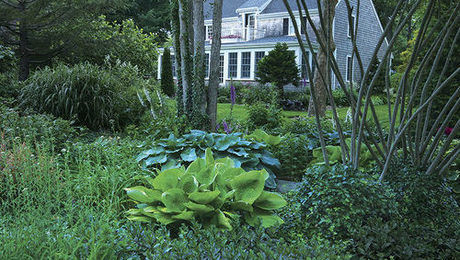

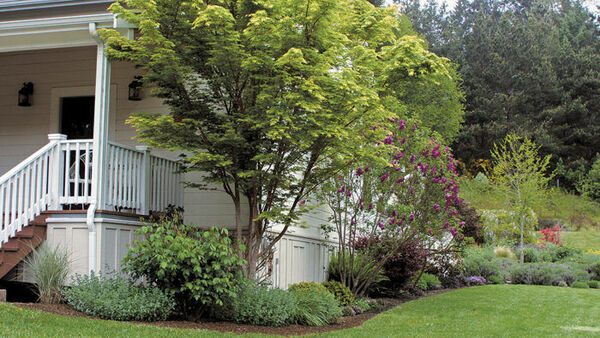














Comments
Log in or create an account to post a comment.
Sign up Log in